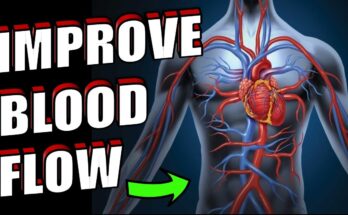Transient Ischemic Attack Treatment: A Transient Ischemic Attack (TIA), often termed a mini-stroke, occurs when blood flow to the brain is temporarily disrupted.
Early diagnosis and treatment are crucial to prevent a full-blown stroke, underscoring the need for immediate medical attention upon recognizing symptoms to ensure swift recovery and minimize long-term impacts.
Understanding Transient Ischemic Attacks
Transient Ischemic Attacks (TIA), often referred to as mini-strokes, provide critical warnings and should be treated with immediate attention. Here’s a comprehensive guide to help you understand the key statistics, risk factors, and symptoms associated with TIAs.
Key Statistics and Risk Factors
Prevalence: Each year, approximately 240,000 Americans experience a TIA. TIAs are most common in older adults, particularly those over the age of 55.
Recurrence: About 1 in 3 individuals who have a TIA will eventually experience a stroke, with the greatest risk being within the first year following a TIA.
Risk Factors:
- Age: The likelihood of experiencing a TIA increases with age.
- Family History: A family history of strokes or TIAs increases one’s risk.
- Medical Conditions: High blood pressure, high cholesterol, diabetes, and atrial fibrillation are significant risk factors.
- Lifestyle Choices: Smoking, excessive alcohol consumption, and obesity are lifestyle factors that can significantly increase the risk of a TIA.
Symptoms of TIA to Watch For
Recognizing the symptoms of a TIA can be lifesaving. Symptoms often appear suddenly and are similar to those of a stroke but are temporary, typically lasting less than one hour. Here are the key symptoms to be aware of:
- Weakness or Numbness: Sudden weakness or numbness in the face, arm, or leg, especially on one side of the body.
- Confusion: Trouble speaking or understanding speech. The person may seem confused or have difficulty comprehending simple statements.
- Vision Problems: Sudden trouble seeing in one or both eyes, including blurred or double vision.
- Dizziness: Sudden dizziness, loss of balance, or coordination issues.
- Severe Headache: A sudden, severe headache with no known cause.
If you or someone you know exhibits any of these symptoms, it is crucial to seek medical attention immediately, even if the symptoms seem to disappear. Prompt treatment can significantly reduce the risk of stroke following a TIA.
Diagnostic Processes for Transient Ischemic Attacks (TIA)
Proper diagnosis is critical as TIAs can precede more severe strokes. Here, we outline the initial evaluation steps, detail diagnostic tests, and explain the role of rapid assessment and TIA clinics in managing TIA effectively.
Initial Evaluation and When to Seek Immediate Medical Attention
Initial Evaluation:
- Medical History and Symptom Assessment: A healthcare provider will first gather a detailed medical history, focusing on the onset, duration, and nature of symptoms.
- Physical Examination: A thorough neurological examination is conducted to assess mental status, coordination, sensation, and motor skills.
- Risk Factor Analysis: Identifying risk factors such as hypertension, diabetes, high cholesterol, and smoking is crucial for diagnosing TIA and implementing preventive measures.
When to Seek Immediate Medical Attention:
- Sudden numbness or weakness in the face, arm, or leg, especially on one side of the body.
- Confusion, trouble speaking, or difficulty understanding speech.
- Trouble seeing in one or both eyes.
- Difficulty walking, dizziness, loss of balance, or lack of coordination.
- Severe headache with no known cause.
Immediate medical attention is essential, as these symptoms can also signal an ongoing stroke.
Detailed Explanation of Diagnostic Tests Used for TIA
To confirm a TIA diagnosis and identify possible causes, several diagnostic tests are employed:
1. Brain Imaging:
- CT Scan: Quickly helps rule out a stroke or other brain-related conditions.
- MRI: Provides detailed images of brain tissue to detect subtle changes that a CT scan might miss.
2. Carotid Ultrasound: Evaluates the carotid arteries in the neck that supply blood to the brain. This test checks for narrowing or clotting that could lead to TIA or stroke.
3. Echocardiogram: Assesses heart function and structure to identify sources of clots that could travel to the brain.
4. Blood Tests: Help in assessing stroke risk factors, including diabetes, high cholesterol, and clotting disorders.
Role of Rapid Assessment Clinics and TIA Clinics
Rapid Assessment Clinics and TIA Clinics play a pivotal role in the management of TIA patients:
- Immediate Evaluation: These clinics provide swift access to specialized neurological evaluations, often within 24 hours of symptom onset.
- Comprehensive Care: Patients receive a thorough assessment using the diagnostic tests listed above, coupled with immediate risk factor management and treatment planning.
- Prevention of Stroke: The quick intervention and personalized treatment plans significantly reduce the risk of subsequent strokes.
However, the integration of these clinics into the healthcare system ensures that patients suspected of having a TIA receive prompt and effective treatment, which is crucial in preventing further neurological damage.
Immediate Response and Management of Transient Ischemic Attacks (TIA)
Recognizing and responding swiftly to a TIA can drastically reduce the risk of subsequent, more severe cerebrovascular events. Here’s a comprehensive look at the critical first steps, the importance of rapid intervention, and the common medications prescribed post-TIA.
First Steps Following a TIA Diagnosis
- Seek Immediate Medical Help: The moment TIA symptoms are noticed, it’s crucial to call emergency services or head to the nearest hospital. Quick action is key.
- Undergo Prompt Medical Evaluation: At the hospital, expect thorough examinations including physical assessments, medical history evaluations, and urgent diagnostic tests like MRI or CT scans to confirm the TIA and assess the brain.
- Monitor Vital Signs: Continuous monitoring of blood pressure, heart rate, and other vital signs helps manage acute symptoms and prevent further complications.
- Identify the Cause: Determining the underlying cause of the TIA is essential for effective treatment. This involves evaluating the cardiovascular system and performing tests like carotid ultrasonography and echocardiography.
- Educate on Symptom Recognition: Patients are educated about recognizing symptoms of TIA and stroke, emphasizing the importance of swift action should symptoms reoccur.
Importance of Rapid Medical Intervention
- Prevents Strokes: Immediate response can reduce the risk of a subsequent stroke, which is significantly higher immediately following a TIA.
- Minimizes Brain Damage: Rapid treatment limits the duration of interrupted blood flow to the brain, thereby reducing potential damage and aiding in quicker recovery.
- Improves Outcomes: Early intervention has been shown to improve overall outcomes and reduce the likelihood of disabilities that might result from a stroke.
Medications Commonly Prescribed Immediately After a TIA
- Antiplatelets: Drugs like aspirin, clopidogrel, and dipyridamole are often prescribed to prevent clot formation, which is a common cause of strokes and TIAs.
- Anticoagulants: Medications such as warfarin or newer anticoagulants like dabigatran may be used to keep blood clots from forming, especially if atrial fibrillation is a factor.
- Statins: These are prescribed to lower cholesterol levels and manage atherosclerosis, thus helping to prevent further arterial blockages.
- Blood Pressure Medications: Controlling hypertension is crucial, and drugs like ACE inhibitors, beta-blockers, or calcium channel blockers might be used.
- Diabetes Management: If diabetes is a contributing factor, managing blood sugar levels becomes a part of the treatment strategy.
Adhering to these immediate response strategies and treatment plans can significantly mitigate the risk of severe complications, emphasizing the critical nature of prompt and effective medical care.
Long-Term Treatment Strategies for Transient Ischemic Attacks (TIAs)
Managing transient ischemic attacks (TIAs) requires a comprehensive long-term strategy to reduce the risk of further episodes and potential strokes. Implementing lifestyle modifications and adhering to ongoing medical treatments are pivotal in preventing the recurrence of TIAs and improving overall health. Below, we explore effective lifestyle changes and medical treatments that play a crucial role in the long-term management of TIAs.
Lifestyle Modifications to Prevent Further TIAs or Strokes
- Adopt a Heart-Healthy Diet: Focus on a balanced diet rich in fruits, vegetables, whole grains, and lean proteins. Reduce intake of saturated fats, cholesterol, and sodium to lower blood pressure and cholesterol levels, which are risk factors for stroke.
- Maintain a Healthy Weight: Achieving and maintaining a healthy weight can significantly reduce the risk of cardiovascular diseases and stroke. Regular consultations with a healthcare provider to monitor and manage weight can be beneficial.
- Exercise Regularly: Engage in moderate-intensity aerobic activity for at least 150 minutes per week. Activities like brisk walking, swimming, or cycling can improve cardiovascular health and reduce stroke risk.
- Quit Smoking: Smoking cessation is one of the most potent lifestyle changes for stroke prevention. Tobacco use increases the risk of strokes, so seeking support for smoking cessation is critical.
- Limit Alcohol Consumption: Excessive alcohol intake can lead to an increase in blood pressure. Limiting alcohol to moderate levels, typically one drink per day for women and two for men, can help lower the risk of stroke.
- Monitor and Manage Blood Pressure: High blood pressure is a significant risk factor for stroke. Regular monitoring and appropriate management through lifestyle changes and medication can help control blood pressure.
- Control Diabetes: Managing blood sugar levels if you have diabetes is crucial in preventing strokes. Regular monitoring and treatment adjustments, as necessary, can help manage diabetes effectively.
- Reduce Stress: Chronic stress can affect blood pressure and heart health. Techniques such as mindfulness, yoga, and regular exercise can help manage stress.
Ongoing Medical Treatments
- Antiplatelet Agents: Medications such as aspirin or clopidogrel help prevent blood clots by inhibiting platelet aggregation. These are typically prescribed to reduce the risk of stroke following a TIA.
- Anticoagulant Therapy: For patients with atrial fibrillation or other conditions that increase the risk of forming blood clots, anticoagulants like warfarin or newer oral anticoagulants may be recommended to prevent stroke.
- Cholesterol-Lowering Medications: Statins or other lipid-lowering drugs can be prescribed to reduce cholesterol levels and manage atherosclerosis, thus preventing further arterial blockages.
- Blood Pressure Medications: Antihypertensive drugs are used to maintain blood pressure within a normal range and reduce the risk of stroke.
- Diabetes Management: For TIA patients with diabetes, maintaining optimal blood glucose levels is crucial. Medications, along with dietary adjustments, play a vital role in diabetes control.
- Regular Check-Ups: Regular visits to a healthcare provider for check-ups and tests can help monitor health status and adjust treatments as needed.
By integrating these lifestyle modifications and ongoing medical treatments, individuals who have experienced a TIA can significantly reduce their risk of future TIAs or strokes, leading to a healthier and more stable life.
Monitoring and Rehabilitation of Transient Ischemic Attacks (TIAs)
Proper monitoring and rehabilitation are crucial for managing TIAs and reducing the risk of stroke. Below, we detail the essential components of this care process.
Importance of Regular Follow-Up Appointments
Regular follow-up appointments are vital after a TIA for several reasons:
- Early Detection: These appointments help healthcare providers detect any changes in neurological status that might suggest the progression towards a stroke.
- Medication Management: Follow-up visits allow for the adjustment of medications that can help prevent another TIA or stroke.
- Lifestyle Guidance: Patients receive ongoing support and education on lifestyle adjustments that can mitigate stroke risks, such as dietary changes, smoking cessation, and regular physical activity.
Physical Therapy and Rehabilitation if Symptoms Persist
In some cases, patients may experience lingering effects after a TIA. Physical therapy and rehabilitation can offer significant benefits:
- Recovery of Function: Tailored physical therapy helps restore functions that might have been weakened, such as coordination and balance.
- Preventive Care: Rehabilitation focuses on strengthening and conditioning to prevent future incidents by improving overall physical health.
- Patient Education: Therapists educate patients on safe and effective ways to perform daily activities, reducing the risk of injury.
Monitoring for Signs of Stroke or Recurrent TIA
Continuous monitoring for signs of a stroke or another TIA is a critical aspect of post-TIA care:
- Recognizing Symptoms: Patients and caregivers must be educated about the symptoms of stroke, including sudden numbness or weakness, confusion, trouble speaking, vision problems, dizziness, or severe headache.
- Immediate Response: Understanding that prompt medical attention can greatly improve outcomes, teaching patients and families to act immediately on observing signs of a stroke.
- Regular Assessments: Healthcare providers may recommend regular screening tests to assess the risk of stroke following a TIA.
However, effective monitoring and rehabilitation after experiencing a TIA are crucial steps in stroke prevention. These measures ensure that patients not only recover more effectively but also sustain better long-term health outcomes, reducing the likelihood of severe complications.
FAQs about Transient Ischemic Attack (TIA) Treatment
1. What is a Transient Ischemic Attack (TIA)?
A Transient Ischemic Attack (TIA) is often referred to as a mini-stroke. It occurs when blood flow to part of the brain is temporarily blocked or reduced, leading to stroke-like symptoms that resolve within 24 hours. Unlike a stroke, a TIA doesn’t cause permanent brain damage but should be treated as a serious warning sign.
2. What are the immediate steps to take if I suspect a TIA?
If you or someone else exhibits symptoms of a TIA, such as sudden numbness or weakness in the face, arm, or leg, especially on one side of the body; confusion; trouble speaking or understanding speech; or difficulty seeing in one or both eyes, it’s crucial to seek medical attention immediately. Early assessment and treatment can significantly reduce the risk of a full-blown stroke.
3. How is a TIA diagnosed?
A TIA is diagnosed through a combination of medical history evaluation, physical examination, and diagnostic tests. These may include imaging tests like CT scans or MRI scans to view the brain, and carotid ultrasound to check the blood flow in the neck arteries. Your doctor may also recommend an echocardiogram to examine the heart’s function and structure.
4. What treatments are available for TIA?
Treatment for TIA focuses on preventing a future stroke. Options include medications to manage blood pressure, reduce cholesterol levels, or prevent blood clots. Depending on the underlying cause, your doctor might also recommend surgical procedures like carotid endarterectomy or angioplasty to improve blood flow to the brain.
5. What lifestyle changes can help prevent another TIA or stroke?
Lifestyle changes play a crucial role in preventing TIAs and strokes. These include eating a balanced diet low in saturated fats and cholesterol, maintaining a healthy weight, engaging in regular physical activity, quitting smoking, and limiting alcohol intake. Regular medical checkups to monitor health conditions that increase stroke risk, like diabetes, high blood pressure, and high cholesterol, are also important.
6. How often should I follow up with a doctor after a TIA?
The frequency of follow-up visits after a TIA can vary based on individual risk factors and the specifics of your condition. Generally, you should have a follow-up appointment shortly after the initial event and periodic check-ups as recommended by your healthcare provider.
Conclusion
In summary, effective treatment of a Transient Ischemic Attack (TIA) involves a comprehensive approach that addresses immediate medical intervention and long-term preventive strategies. Immediate treatments often include medications like antiplatelets or anticoagulants to reduce blood clot risk. Long-term strategies focus on lifestyle changes and managing underlying conditions like hypertension, diabetes, and cholesterol.
If you are at risk of TIA, it’s crucial to discuss your health with a healthcare provider. Early diagnosis and treatment can significantly reduce the risk of a future stroke. Remember, a TIA is a warning sign – don’t ignore it. Regular check-ups and proactive health management can make a critical difference in preventing severe outcomes. Stay informed and take charge of your health to minimize your stroke risk.
References
For those seeking further information on Transient Ischemic Attack (TIA) treatment, the following sources are reputable and offer extensive insights. These articles and studies provide valuable validation for the treatments discussed, ensuring readers have access to reliable and up-to-date medical knowledge.
- American Stroke Association – This website provides comprehensive details on the symptoms, treatments, and prevention strategies for TIA. Read more about TIA treatments.
- Mayo Clinic – The Mayo Clinic offers a detailed exploration of TIA, including causes, risk factors, and modern approaches to treatment. Their resources are continuously updated to reflect the latest medical research. Explore TIA causes and treatments.
- National Health Service (NHS) – The NHS provides guidelines on how to recognize and react to TIAs, and outlines the importance of seeking immediate medical intervention. Learn about the NHS TIA guidelines.
- PubMed Central – For a more scientific insight, PubMed Central offers access to numerous research articles on TIA, including studies on preventative measures and long-term care strategies. Review scientific studies on TIA.
- Harvard Health Publishing – Harvard Medical School’s publishing arm offers articles written by medical professionals on the latest TIA treatments and research findings. Read Harvard’s perspective on TIA.
These resources are intended to assist in the understanding and management of TIA, promoting better health outcomes through informed decisions.



